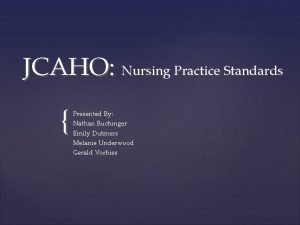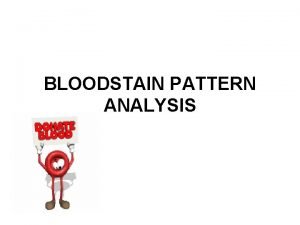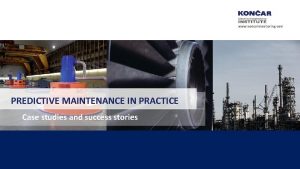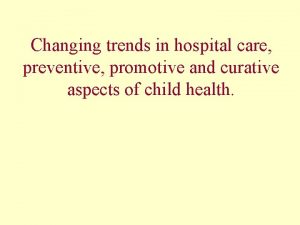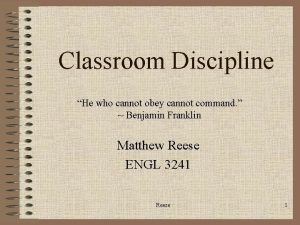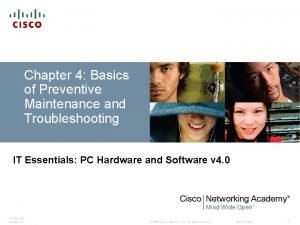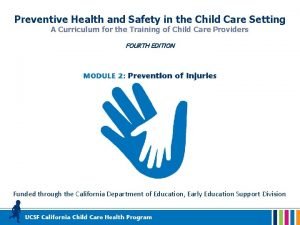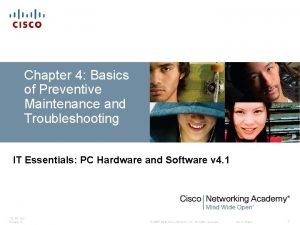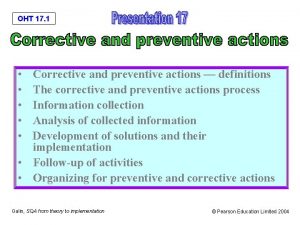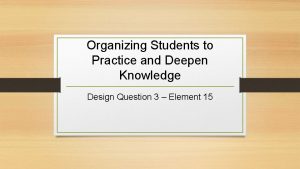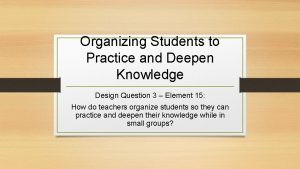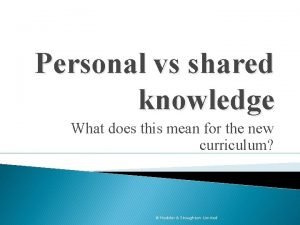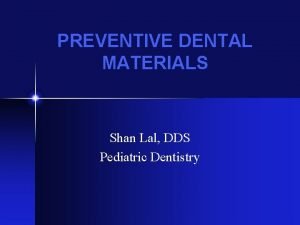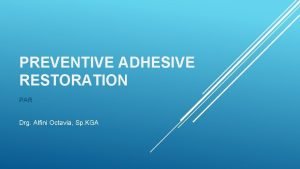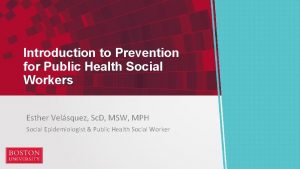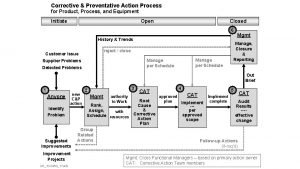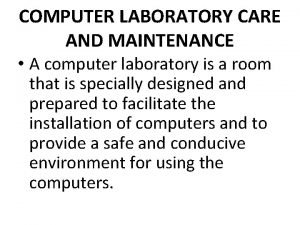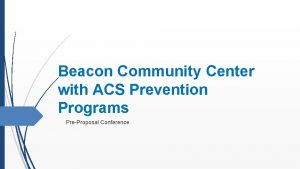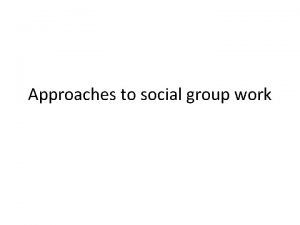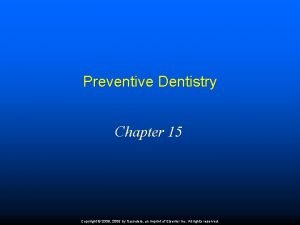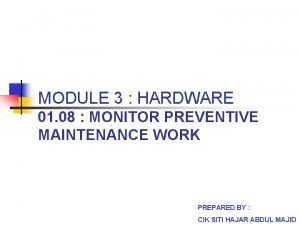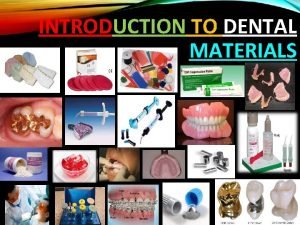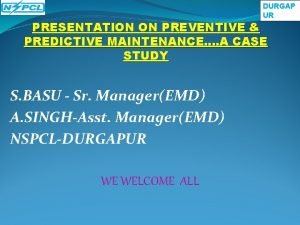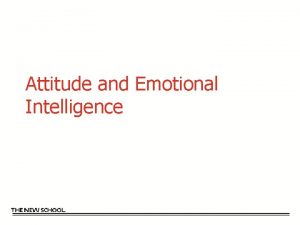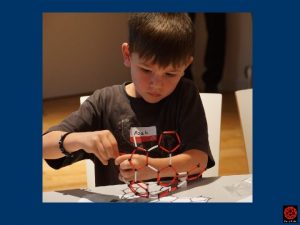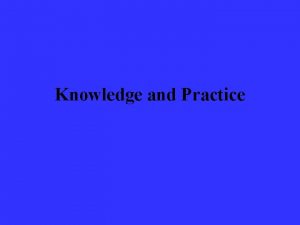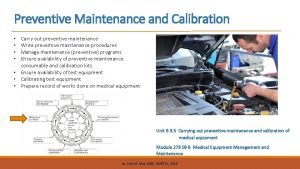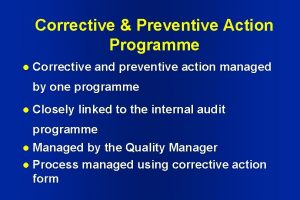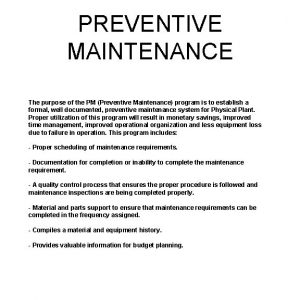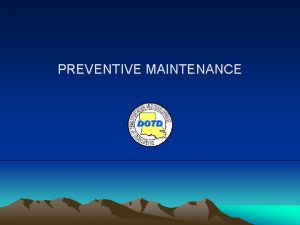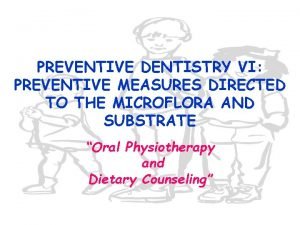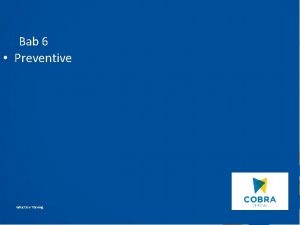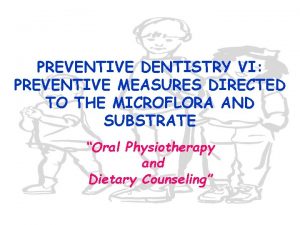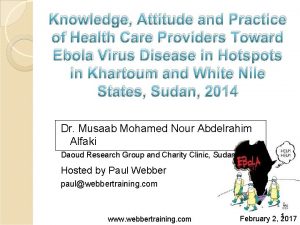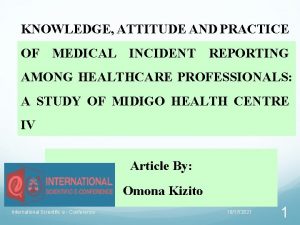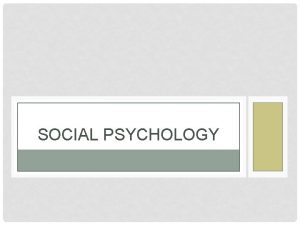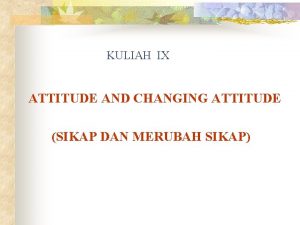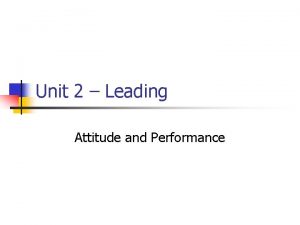Impact of Knowledge and Attitude on Preventive Practice







































- Slides: 39

Impact of Knowledge and Attitude on Preventive Practice regarding Dengue Fever among Residents in Dasmariñas City , Cavite: A Structural Equation Modeling Approach Maurice Amiel Villorente Junka Shiozawa De La Salle University- Dasmariñas, Cavite , Philippines October 30 -31, 2017

INTRODU CTION

Statement of the Problem Specifically, the study aims to answer the following questions: 1. What is the demographic profile of the respondents from Dasmariñas City, Cavite as to age, gender, civil status, educational level, and employment status? 2. What is the current level of knowledge, attitude, and preventive practice about dengue fever of the respondents in Dasmariñas City, Cavite? 3. What are the factors affecting the knowledge on Dengue and preventive practice of the respondents in Dasmariñas City, Cavite? 3. 1 Is there an association between the demographic profile and preventive practice about dengue fever of the respondents? 4. What is the relationship between the knowledge, attitude and preventive practice about dengue fever of the respondents in Dasmariñas City, Cavite? 4. 1 Knowledge and Preventive Practice 4. 2 Attitude and Preventive Practice

Scope and Limitations • Dasmariñas City, Cavite only, particularly to the barangays with the highest number of dengue cases.

METHODOLOGY 3. 1 Research Design • Descriptive and Quantitative Analytical Cross Sectional Study

METHODOLOGY 3. 2 Research Procedure • Purposive Sampling • Survey and Interview Method • 419 respondents • Respondents aged above 18 years old (within household) • Questionnaire – Modified and Validated • Bloom’s Taxonomy (Knowledge Interpretation) • Likert’s Scale (Attitude and Preventive Behavior Interpretation)

METHODOLOGY • Dasmariñas City, Cavite (10 barangays with highest number of dengue cases) (Salawag, Paliparan III, Sampaloc IV, Salitran III, Langkaan II, Sampaloc II, Burol I, Salitran IV, and Paliparan II) • Month of August – September 2016 - Survey and Interview

RESULTS Table 4. 1 Distribution of Respondents by Barangay Frequency Percentage Burol 2 40 9. 5 Langkaan 2 41 9. 8 Paliparan 2 44 10. 5 Paliparan 3 38 9. 1 Salawag 46 11. 0 Salitran 2 41 9. 8 Salitran 3 44 10. 5 Salitran 4 41 9. 8 Sampaloc 2 40 9. 5 Sampaloc 4 44 10. 5 Total 419 100. 0

RESULTS Table 4. 2 Distribution of Respondents by Gender Frequency Percentage Female 351 83. 8 Male 68 16. 2 Total 419 100. 0

RESULTS Table 4. 3 Distribution of Respondents by Age Group Frequency Percent 18 -30 years old 112 26. 7 31 -40 years old 117 27. 9 41 -50 years old 104 24. 8 51 years old -above 86 20. 5 Total 419 100. 0 Mean= 40. 11 S. D=12. 659 Minimum=18 Maximum=82

RESULTS Table 4. 4 Distribution of Respondents by Civil Status Frequency Percent Married 327 78. 0 Separated 12 2. 9 Single 53 12. 6 Widowed 27 6. 4 Total 419 100. 0

RESULTS Table 4. 5 Distribution of Respondents by Education Level Elementary Frequency Percent 34 8. 1 High school 184 43. 9 Vocational 11 2. 6 College 171 40. 8 College Graduate 17 4. 1 Graduate Studies 2 . 5 Total 419 100. 0

RESULTS Table 4. 6 Distribution of Respondents by Employment Status Frequency Percent Employed 181 43. 2 Student 14 3. 3 Unemployed 224 53. 5 Total 419 100. 0

RESULTS Table 4. 7 Distribution of Respondents by Family Income Frequency Percent None 78 18. 6 Php 1. 00 - Php 7, 000 115 27. 4 Php 7, 001 - Php 15, 000 128 30. 5 Php 15, 001 - Php 25, 000 58 13. 8 Php 25, 001 - Php 35, 000 22 5. 3 Php 35, 001 - Php 45, 000 8 1. 9 Php 45, 001 - Php 55, 000 4 1. 0 Php 55, 001 and above 6 1. 4 419 100. 0 Family Monthly Income Total

RESULTS Table 4. 8 Distribution of Respondents by Family Members Frequency Percent 0 to 2 25 6. 0 3 to 5 228 54. 4 6 or more 166 39. 6 Total 419 100. 0 Members in the Family

RESULTS Table 4. 9 Distribution of Respondents by Children under 16 years old living in the house Number of Children Frequency Percent 0 to 2 298 71. 1 3 to 5 111 26. 5 6 or more 10 2. 4 Total 419 100. 0

RESULTS Table 4. 10 Distribution of Respondents by history of Dengue in last two years Frequency Percent No 348 83. 1 Yes 71 16. 9 419 100. 0 History of Dengue Total

RESULTS Figure 4. 1 Involvement in Health Promotional Activities and Educational Intervention No 29% Yes 71%

RESULTS Figure 4. 2 Respondents who received information about dengue fever Yes No 3% 97%

RESULTS Table 4. 11 Distribution of Respondents by Types of Health Promotional Activities and Sources of Information regarding Dengue fever Health Promotional Activities Frequency (n=419) Public Lecture/ Seminar 152 Individual Advice 117 Source Reduction 57 Fogging/ Misting Pesticides 127 Demonstration 60 Sources of Information Frequency (n=419) Public Announcement 223 Outdoor Media 49 Television [Local/ National] 268 Radio [Local/ National] 88 Newspaper [Local/ National] 77 Printed Media (Banners/ Brochures) 100

RESULTS Table 4. 12 Distribution of Knowledge Level on Dengue Fever of the respondents Frequency Percent High level (16 -20 scores) 85 20. 3 Moderate level (10 -15 scores) 281 67. 1 Low level (0 -9 scores) 53 12. 6 419 100. 0 Knowledge Level Total Mean= 12. 87 S. D=2. 871 Minimum=3 Maximum=20

RESULTS Table 4. 13 Distribution of Attitude level towards Dengue Fever of the respondents Attitude Level Frequency Percent Positive Attitude (53 -66 scores) 293 70 Moderate Attitude (40 -52 scores) 120 28. 6 Negative Attitude (11 -39 scores) 6 1. 4 Total 419 100. 0 Mean= 54. 18 S. D=5. 622 Minimum=16 Maximum=66

RESULTS Table 4. 14 Distribution of Preventive Practice level towards Dengue Fever of the respondents Preventive Practice Level Frequency Percent Good level (58 -72 scores) 186 44. 4 Fair level (36 -57 scores) 225 53. 7 Poor level (12 -35 scores) 8 1. 9 419 100. 0 Total Mean= 55. 82 S. D=9. 307 Minimum=28 Maximum=72

DISCUSSION Table 4. 18 Association of Independent Variables and Preventive Practice Level Variables Chi- square value p-value Degrees of freedom Interpretation Barangay Age group Gender Civil Status Educational Level Employment Status Family Monthly Income Members in the Family Number of Children History of Dengue 128. 260 10. 759 5. 085 5. 888 6. 386 2. 769 26. 723 6. 514 5. 761 0. 722 0. 000** 0. 096 0. 079 0. 436 0. 782 0. 597 0. 021* 0. 164 0. 218 0. 697 18 6 2 6 10 4 14 4 4 2 significant not significant not significant Health Promotional Activities and Educational Intervention 10. 269 0. 006** 2 significant 0. 000** 0. 003** 0. 000** 2 4 4 significant Received Information 16. 617 Knowledge Level 15. 779 Attitude Level 31. 251 ** - significant at 0. 01 * - significant at 0. 05

DISCUSSION Table 4. 20 Rotated Component Matrix showing the correlation between the four factors and involvement in health promotional activities and educational intervention, and sources of information 1 -. 128. 120. 084. 155. 096. 222. 749. 773. 800. 866 Component 2 3. 384. 237. 167. 881. 875. 230. 861. 256. 342. 797 -. 112. 010. 321 -. 131. 119. 223. 043. 222. 126. 069 Public Lecture/ Seminar Individual Advice Source Reduction Fogging/ Misting Pesticides Demonstration Public Announcement Outdoor Media Television Radio Newspaper Printed Media/Banners . 808. 050. 269 Brochures Extraction Method: Principal Component Analysis. Rotation Method: Equamax with Kaiser Normalization. a. Rotation converged in 6 iterations. 4. 601. 061. 104 -. 005. 157. 857. 202 -. 070. 167. 118. 208

DISCUSSION Table 4. 21 Correlation matrix between 4 factors, knowledge level, attitude level, and preventive practice level Correlations Mass Media Local Control Program Dengue Information. Giving Public Promotion Knowledge Attitude Preventive Practice Mass Media 1 . 000 . 249** . 035 -. 167** Local Control Program . 000 1 . 000 . 026 . 032 . 116* Dengue Information. Giving . 000 1 . 000 . 301** . 039 -. 141** Public Promotion . 000 1 . 068 . 090 . 171** Knowledge . 249** . 026 . 301** . 068 1 -. 053 -. 147** Attitude . 035 . 032 . 039 . 090 -. 053 1 . 243** Preventive Practice -. 167** . 116* -. 141** . 171** -. 147** . 243** 1 **. Correlation is significant at the 0. 01 level (2 -tailed). *. Correlation is significant at the 0. 05 level (2 -tailed).

DISCUSSION Table 4. 23 Rotated Component Matrix showing the correlation between the first three factors and statements in Attitude part of the questionnaire Statements Component 1 2 3 A 1 . 145 . 753 . 048 A 2 . 106 . 369 . 562 A 3 . 051 . 740 -. 083 A 4 . 397 . 499 . 143 A 6 . 747 . 200 -. 009 A 9 . 824 . 101 -. 079 A 10 -. 069 -. 183 . 835 A 11 . 815 . 077 . 093 Extraction Method: Principal Component Analysis. Rotation Method: Varimax with Kaiser Normalization. a. Rotation converged in 4 iterations.

DISCUSSION Table 4. 24 Goodness of fit indices for structural equation model of reporting dengue preventive practice Model Chi- square df P CFI TLI RMSEA Proposed 216. 974 73 . 000 . 770 . 713 . 069 Second 144. 953 51 . 000 . 834 . 785 . 066 Final 74. 651 51 . 017 . 958 . 946 . 033

DISCUSSION Figure 4. 5 Final Model of 4 factors, knowledge, attitude towards dengue control, attitude towards fever, and preventive practice.

DISCUSSION Hypothesized Paths Unstandardized Standardized Estimates S. E. C. R. P Knowledge <--- Mass Media . 606 . 219 . 127 4. 787 *** Knowledge <--- Dengue Info . 780 . 281 . 127 6. 155 *** Attitude. Fever Practice . 419 . 631 . 069 6. 090 *** <--<--<--- Attitude-Dengue Control Mass Media Local Control Knowledge -1. 495 1. 090 -. 370 -. 160. 117 -. 110 . 437. 426. 164 -3. 418 2. 558 -2. 252 ***. 011*. 024* Practice <--- Public Promotion 1. 438 . 154 . 426 3. 376 *** Practice <--- Dengue- Info -1. 219 -. 130 Attitude-Dengue A 6 <--1. 000. 667 Control Attitude-Dengue A 9 <--1. 120. 751 Control Attitude-Dengue A 11 <--1. 031. 689 Control A 1 <--Attitude-Fever 1. 000. 507 A 3 <--Attitude-Fever. 913. 463 A 4 <--Attitude-Fever 1. 330. 606 Practice <--Attitude-Fever 4. 671. 199 ***-significant at < 0. 001 level **-significant at 0. 01 level *- significant at 0. 05 level . 445 -2. 740 . 006** . 105 10. 635 *** . 099 10. 429 *** . 159. 212 1. 464 5. 732 6. 267 3. 191 ***. 001** <---

DISCUSSION Table 4. 26 Squared Multiple Correlations of Final model Attitude- Fever Knowledge A 4 A 3 A 11 A 9 A 6 Practice Estimate. 398. 127. 368. 215. 257. 474. 564. 445. 147

DISCUSSION The Unstandardized Equations are: A 1= Attitude towards Fever + e 4, where e 4 is a residual error for A 1 A 3= 0. 91* Attitude towards Fever + e 5, where e 5 is a residual error for A 3 A 4= 1. 33* Attitude towards Fever + e 6, where e 6 is a residual error for A 4 A 6= Attitude towards Control + e 1, where e 1 is a residual error for A 6 A 9= 1. 12* Attitude towards Control + e 2, where e 2 is a residual error for A 9 A 11= 1. 03* Attitude towards Control + e 3, where e 3 is a residual error for A 11 Attitude towards Fever= 0. 42* Attitude towards Control + e 11, where e 11 is a residual error for Attitude towards fever Practice= -0. 37*Knowledge + 4. 67* Attitude towards Fever - 1. 5*Mass Media + 1. 09*Local Control – 1. 22 Dengue- Info + 1. 44*Public Promotion + e 10, where e 10 is a residual error for Practice Since knowledge partially mediated the relationship of mass media, dengue- information giving and practice, the unstandardized equations can be: Knowledge= 0. 61*Mass Media + 0. 78*Dengue- Info + e 9, where e 9 is a residual error for Knowledge Practice= -0. 37* Knowledge + 4. 67 * Attitude towards Fever + 1. 09*Local Control + 1. 44*Public Promotion + e 10, where e 10 is a residual error for Practice

DISCUSSION The Standardized Equations are: A 1= 0. 51* Attitude towards Fever + e 4, where e 4 is a residual error for A 1 A 3= 0. 46* Attitude towards Fever + e 5, where e 5 is a residual error for A 3 A 4= 0. 61* Attitude towards Fever + e 6, where e 6 is a residual error for A 4 A 6= 0. 67* Attitude towards Control + e 1, where e 1 is a residual error for A 6 A 9= 0. 75* Attitude towards Control + e 2, where e 2 is a residual error for A 9 A 11= 0. 69* Attitude towards Control + e 3, where e 3 is a residual error for A 11 Attitude towards Fever= 0. 63* Attitude towards Control + e 11, where e 11 is a residual error for Attitude towards Fever Practice= -0. 11*Knowledge + 0. 20* Attitude towards Fever - 0. 16*Mass Media + 0. 12*Local Control- 0. 13*Dengue- Info + 0. 15*Public Promotion + 0. 9236*e 10, where e 10 is a residual error for Practice Since knowledge partially mediated the relationship of mass media, dengue-information giving and practice, the standardized equations can be: Knowledge= 0. 22* Mass Media + 0. 28* Dengue- Info + 0. 9343*e 9, where e 9 is a residual error for Knowledge Practice= -0. 11*Knowledge + 0. 20* Attitude towards Fever + 0. 12*Local Control + 0. 15*Public Promotion + 0. 9236*e 10, where e 10 is a residual error for Practice

CONCLUSIONS • Most of the respondents were • from Barangay Salawag • Female • 30 -41 yrs old • Married • High school Educational Level • Unemployed • Preventive Level has a significant relationship with • Barangay • Family Income • Health Promotional Activities and Educational Intervention • Received Information (Sources of Information)

CONCLUSIONS • For level of awareness, most of the respondents have • “moderate level” on Knowledge • “positive attitude” on Attitude • “fair level” on Preventive Practice Based from the Final Model • having a positive attitude against dengue fever may translate to adoption of good dengue preventive practices • having good exposure in Mass Media such as outdoor media, television, radio, newspaper, brochures, and other printed media increases the level of knowledge about dengue of the residents in Dasmariñas. • good involvement in Dengue Information- Giving sessions such as individual advice and demonstration may also increase the knowledge level of the residents about dengue • good involvement of the residents in local dengue control program such as source reduction and fogging/ misting pesticides may translate to good dengue preventive practice

CONCLUSIONS • good exposure and participation in Dengue Public Promotion such as public lectures or seminars and announcements about dengue fever and its prevention may also have positive impact on dengue preventives of the residents • the model does not guarantee that residents in Dasmariñas, who have high knowledge level about dengue fever, will have good dengue preventive practices • it does not guarantee that residents in Dasmariñas , who have good involvement and exposure in Mass Media and Dengue- Information Giving, will have good dengue preventive practices

RECOMMENDATIONS • For Department of Health • For Cavite Provincial Epidemiology Surveillance Unit (PESU) and City Health Office(s) of Dasmariñas City, Cavite (CHO) • For Other Provinces/Places • For Future Researchers

Cited References • • • Abu. Bakar S, Chandren J, Wong L. 2015. Practices of Dengue Fever Prevention and the Associated Factors among Orang Asli in Peninsular Malaysia. [cited 2016 February 25]. Available from http: //www. ncbi. nlm. nih. gov/pmc/articles/PMC 4534093/ Ahmed N. 2008. Knowledge, Attitude and Practice of Dengue Fever Prevention Among the People in Male’ Maldives. [cited 2016 February 25]. Available from http: //www. jhealthres. org/upload/journal/343/22(suppl)_p 33 -37_nahida. pdf Armstrong G, Cui W, Inthasoum L, Khensakhou K, Mayxay M, Thammavong S, Vongxay V. 2013. Dengue in peri-urban Pak-ngum district, Vientiane capital of Laos: a community survey on Knowledge, Attitude and Practice. Available from http: //www. ncbi. nlm. nih. gov/pmc/articles/PMC 3645963/ Babaran R. 2001. A retrospective survey of the incidence of dengue hemorrhagic fever among afflicted patients in De La Salle University Medical Center in 1991 [undergraduate thesis]. [Dasmariñas (CAV)]: De La Salle University Dasmariñas. CNN Philippines. World’s Dengue Vaccine Now Available in PH; February 12 2016. [cited 2016 March 8]. Available from http: //cnnphilippines. com/news/2016/02/11/dengue-vaccine-Dengvaxia. Philippines. html CNN Philippines. PH Approves first Anti-Dengue Vaccine in Asia; December 23 2015. [cited 2016 March 8]. Available from http: //cnnphilippines. com/news/2015/12/23/PH-approves-first-antidengue-vaccine-in. Asia. html

• Papa F. 1996. Study on the incidence of hemorrhagic fever in Cavite province from January 1988 to December 1992 [undergraduate thesis]. [Dasmariñas (CAV)]: De La Salle University- Dasmariñas. • Philippine. Daily Inquirer. Dengue Fever Cases Going Up in Cavite; September 30 2015. [cited 2016 February 25]. Available from http: //newsinfo. inquirer. net/725480/dengue-fever-cases- going-up-in-cavite • Rodeo L. 2005. An assessment of the teachers and students knowledge of the factors associated with dengue fever in Burol Elementary School, Burol Main, Dasmariñas City, Cavite [undergraduate thesis]. [Dasmariñas (CAV)]: De La Salle University Dasmariñas. • Sanofi Pasteur. Dengvaxia, World’s First Dengue Vaccine, Approved in Mexico; December 9 2015. [cited 2016 February 25]. Available from http: //www. sanofipasteur. com/en/ articles/ dengvaxia-world-s-first-dengue-vaccineapproved-in mexico. aspx • Suhr D. Basics of Structural Equation Modeling. University of Northern Colorado. [cited 25 February 2016]. Available from http: //www. lexjansen. com/wuss/2006/tutorials/TUT-Suhr. pdf • World Health Organization. Dengue. [cited 2016 February 5]. Available from http: //www. who. int /topics/dengue/en/ • World Health Organization. WHO Fact Sheets: Dengue and Severe Dengue. [cited 2016 February 5]. Available from http: //www. who. int/mediacentre/factsheets/fs 117/en/ • World Health Organization. WHO Dengue Guidelines for Diagnosis, Prevention and Control. [cited 2016 February 5]. Available from http: //apps. who. int/iris/bitstream/10665/44188/1/9789241547871_eng. pdf • World Health Organization. WHO Global Strategy for Dengue Prevention and Control, 20122020. [cited 2016 February 5]. Available from http: //apps. who. int/iris/bitstream/10665/75303/1/9789241504034_eng. pdf • World Health Organization. WHO Dengue Control Strategies. [cited 2016 February 5]. Available from http: //www. who. int/denguecontrol/control_strategies/en/
 Ska skills knowledge attitude
Ska skills knowledge attitude National knowledge commission 2005
National knowledge commission 2005 Knowledge creation and knowledge architecture
Knowledge creation and knowledge architecture Joint commission impact on nursing practice
Joint commission impact on nursing practice Impact angle determination practice worksheet
Impact angle determination practice worksheet Preventive and predictive maintenance of hydro power plant
Preventive and predictive maintenance of hydro power plant Monash school of public health
Monash school of public health Changing trends in hospital care
Changing trends in hospital care Supportive discipline in the classroom
Supportive discipline in the classroom Preventive maintenance and troubleshooting
Preventive maintenance and troubleshooting Preventive maintenance and troubleshooting
Preventive maintenance and troubleshooting Preventive health and safety in the child care setting
Preventive health and safety in the child care setting Preventive maintenance and troubleshooting
Preventive maintenance and troubleshooting Corrective and preventive action
Corrective and preventive action Marzano element 15
Marzano element 15 Organizing students to practice and deepen knowledge
Organizing students to practice and deepen knowledge Shared knowledge vs personal knowledge
Shared knowledge vs personal knowledge Knowledge shared is knowledge squared meaning
Knowledge shared is knowledge squared meaning Knowledge shared is knowledge multiplied meaning
Knowledge shared is knowledge multiplied meaning Contoh shallow knowledge dan deep knowledge
Contoh shallow knowledge dan deep knowledge What is a priori knowledge
What is a priori knowledge Street smarts vs book smarts
Street smarts vs book smarts Knowledge and knower
Knowledge and knower Gertler econ
Gertler econ Preventive maintenance of electrode holder
Preventive maintenance of electrode holder Education is a matter of the heart don bosco
Education is a matter of the heart don bosco Preventive materials in dentistry
Preventive materials in dentistry Preventive adhesive restoration adalah
Preventive adhesive restoration adalah Preventive social work example
Preventive social work example Preventive-action product
Preventive-action product Corrective maintenance in computer laboratory
Corrective maintenance in computer laboratory Preventive services acs
Preventive services acs Remedial preventive developmental
Remedial preventive developmental Preventive maintenance for milling machine
Preventive maintenance for milling machine Identify sources of systemic fluoride
Identify sources of systemic fluoride Face-threatening
Face-threatening Kebaikan preventive maintenance
Kebaikan preventive maintenance Model of group work
Model of group work Ideal characteristics of dental products
Ideal characteristics of dental products Durgap
Durgap



